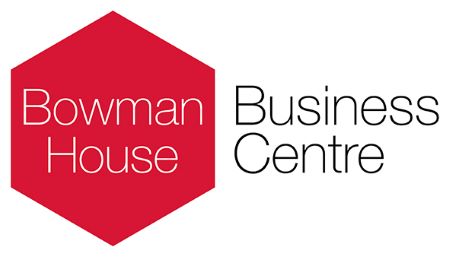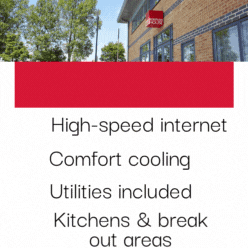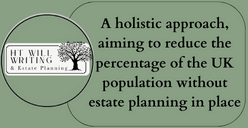In case you missed it see what’s in this section
Let's Talk

Causes, Symptoms, and Solutions of Workplace Burnout
In today's fast-paced and highly demanding work environments, workplace burnout has become an increasingly prevalent issue. Burnout not only affects individual employees but also has far-reaching consequences for organisational productivity and morale. This blog post will delve into the causes, symptoms, and solutions for workplace burnout, providing a comprehensive guide to understanding and addressing this critical issue.
What is Workplace Burnout?
Workplace burnout is a state of physical, emotional, and mental exhaustion caused by prolonged and excessive stress at work. It occurs when employees feel overwhelmed, emotionally drained, and unable to meet constant demands. As the stress continues, employees begin to lose interest and motivation in their work, leading to decreased productivity and a decline in overall job performance.
Causes of Workplace Burnout
Excessive Workload: One of the primary causes of burnout is an excessive workload. When employees are expected to handle more tasks than they can reasonably manage, it leads to chronic stress and eventual burnout.
Lack of Control: Employees who feel they have little control over their work or lack a say in decisions that affect their jobs are more likely to experience burnout. This can include not having a voice in setting deadlines, project priorities, or work conditions.
Insufficient Rewards: When the rewards (financial, social, or intrinsic) for work performance are insufficient, employees may feel undervalued. This lack of recognition and reward can contribute significantly to burnout.
Poor Work Relationships: A toxic work environment with poor relationships between colleagues, managers, and team members can exacerbate feelings of burnout. Conflict, lack of support, and poor communication all contribute to a stressful work environment.
Unclear Job Expectations: Uncertainty about job responsibilities, performance expectations, and the future of one's role can create significant stress and anxiety, leading to burnout.
Work-Life Imbalance: When work demands exceed the boundaries of the workday, leaving little time for personal life and relaxation, burnout becomes a likely outcome. The inability to disconnect from work leads to chronic fatigue and stress.
Symptoms of Workplace Burnout
Burnout manifests in various ways, and recognizing the symptoms is the first step in addressing it. The symptoms can be categorised into physical and emotional.
Physical Symptoms
Chronic Fatigue: Persistent tiredness and lack of energy, even after adequate rest.
Frequent Illness: Lowered immunity leading to frequent colds, infections, and other health issues.
Sleep Disturbances: Insomnia or disrupted sleep patterns, leading to insufficient rest.
Headaches and Muscle Pain: Regular headaches, muscle tension, and unexplained aches and pains.
Emotional Symptoms
Feeling Overwhelmed: Constant feelings of being overwhelmed by work and life demands.
Loss of Motivation: Lack of enthusiasm and motivation for work tasks and goals.
Negative Outlook: Pessimistic attitude towards work, life, and self.
Feelings of Detachment: Emotional numbness and disconnection from work and colleagues.
Irritability and Mood Swings: Increased irritability, frustration, and moodiness.
Behavioural Symptoms
Withdrawal from Responsibilities: Avoidance of work tasks, responsibilities, and meetings. This can lead to a noticeable decline in work performance and efficiency
Increased Absenteeism: Frequent absence from work or tendency to arrive late and leave early.
Isolation: Withdrawing from colleagues, friends, and social activities.
Unhealthy Coping Mechanisms: Increased reliance on alcohol, drugs, or unhealthy eating habits as a way to cope with stress.
Solutions to Combat Workplace Burnout
Addressing workplace burnout requires a multifaceted approach that involves both organisational changes and individual strategies. Here are some effective solutions to combat burnout:
Organisational Solutions
Manage Workload Effectively: Organisations should ensure that workloads are manageable and aligned with employees' capabilities. This may involve hiring additional staff, redistributing tasks, or setting realistic deadlines.
Promote Work-Life Balance: Encourage employees to maintain a healthy work-life balance by setting clear boundaries between work and personal life. This can include flexible working hours, remote work options, and promoting the importance of taking breaks and vacations.
Enhance Job Control: Allow employees to have a say in decisions that affect their work. Providing autonomy and involving employees in goal-setting and problem-solving can increase their sense of control and reduce burnout.
Recognition and Rewards: Implement a system for recognizing and rewarding employees' hard work and achievements. This can include financial incentives, public acknowledgment, and opportunities for career advancement.
Foster a Positive Work Environment: Cultivate a supportive and collaborative work culture. Encourage open communication, provide opportunities for team building, and address conflicts promptly and constructively.
Clear Job Expectations: Ensure that job roles and responsibilities are clearly defined. Regularly communicate performance expectations and provide constructive feedback to help employees understand their roles better.
Provide Support Resources: Offer access to resources such as employee assistance programs (EAPs), mental health support, and stress management workshops. Providing these resources demonstrates a commitment to employees' well-being.
Individual Strategies
Self-Care Practices: Prioritise self-care by engaging in activities that promote physical, emotional, and mental well-being. This can include regular exercise, healthy eating, sufficient sleep, and mindfulness practices like meditation and yoga.
Set Boundaries: Establish clear boundaries between work and personal life. Avoid checking work emails and taking work calls during personal time, and designate specific times for relaxation and leisure activities.
Time Management: Develop effective time management skills to prioritise tasks, set realistic goals, and allocate time for breaks and relaxation. Use tools like to-do lists, calendars, and time-tracking apps to stay organised.
Seek Support: Reach out to colleagues, friends, and family for support. Talking about stressors and seeking advice can provide new perspectives and help alleviate feelings of isolation.
Professional Help: If burnout symptoms persist, consider seeking help from a mental health professional or a private rehab facility. Therapy or counselling can provide strategies to manage stress and improve overall mental health.
Engage in Hobbies: Pursue hobbies and activities outside of work that bring joy and relaxation. Engaging in creative or recreational activities can provide a much-needed break from work-related stress.
Mindfulness and Relaxation Techniques: Practice mindfulness and relaxation techniques such as deep breathing, progressive muscle relaxation, and guided imagery. These practices can help reduce stress and promote a sense of calm.
Workplace burnout is a significant issue that can have serious implications for both employees and organisations. By understanding the causes and symptoms of burnout, and implementing effective strategies to address it, individuals and organisations can create healthier, more productive work environments.
Combating burnout requires a collaborative effort, with organisations fostering supportive work cultures and individuals prioritising their well-being. Through proactive measures and a commitment to mental health, it is possible to reduce the prevalence of workplace burnout and promote a more balanced, fulfilling work life.
Weather in Swindon
Listings




















